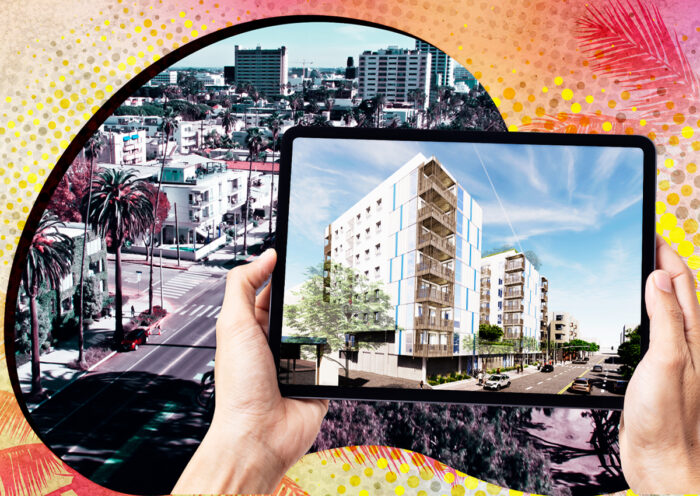“The Texas market is appealing for solar because it’s a major energy economy in the U.S. and one of the states where solar is easiest [from a permitting perspective] and has lower cost land,” Scott Canada, executive vice president of McCarthy Building Companies’ renewable energy team, told Commercial Observer via email.
Texas, despite its deep red Republican leanings, has indeed proven itself a leader in both solar and wind, though the state’s focus on renewable energy isn’t immune to politicization and ongoing pushback from the right. Ironically, many of the country’s top-producing solar states tend to be red: After California and Texas, Florida and North Carolina rank as the third and fourth top-producing solar states, according to the Solar Energy Industries Association (SEIA).
In 1999, Texas was an early adopter to develop the Renewable Portfolio Standard, which requires a set amount of power to come from renewable resources. The move jump-started the solar market in Texas and prompted people to pay attention.
Now, “the amount of large corporate buyers who want to enter into a long-term power purchase agreement to buy clean energy [has] gone through the roof,” said Timothy Heinle, vice president of business development at Texas solar utility company OCI Solar Power. “Texas, and specifically ERCOT [the Electric Reliability Council of Texas], is ‘ground zero’ for what are called corporate power purchase agreements.”
As a liquid energy market, ERCOT covers 75 percent of Texas’ geography and 90 percent of the state’s electrical demand. “That has helped develop the market for independent power in general, be it no matter what the resources, whether it’s gas, solar, wind,” said James Scott, OCI’s vice president of project development.
Texas’ history with energy, coupled with its terrain, sunshine and landowner relationships, empowers the state for solar power. The process of siting land for development, however, is far more complex than typical buying and building. Developers consider a location’s topographical and infrastructural characteristics, not to mention policy, zoning and an ability to lease or buy the land. Development therefore doesn’t happen overnight, though the solar market — in Texas and beyond — can increasingly withstand even the cloudiest of days.
Development categories
Solar development falls into three categories that cater to three markets, explains John Bernhardt, vice president of policy and market strategy at national solar provider Pivot Energy. Among the most widely recognized, residential or rooftop solar generally connects to a customer meter and provides power for an individual.
Then, there are the major, 500-megawatt projects connected to significant transmission infrastructure that require hundreds, if not thousands, of acres. These tend to generate energy that’s injected into a bulk system.
As an engineer, procurement and construction contractor, McCarthy Building works on large-scale or utility-scale solar projects that generally produce hundreds of megawatts of power. “This means we design the solar plant to fit the land parcel and maximize production; purchase much of the equipment; and construct the plant,” said Canada.
McCarthy typically builds projects for developers and sells power through a power purchase agreement (PPA). That power then goes to the grid, unless it goes to a battery energy storage systems facility (BESS). McCarthy has installed or is currently installing projects that amount to roughly 3-gigawatts solar and 500-megawatts BESS in Texas.
Somewhere in the middle fall companies such as OCI and Pivot. Primarily focused on ground-mount, utility-scale solar projects, OCI sells power at wholesale to companies like electricity providers that, in turn, sell that energy at retail to end users. A typical OCI project has a capacity of 100- to 200-megawatts of alternating current (AC), said Heinle, while OCI’s solar farms often require between 500 to 1,000 acres of land.
Pivot — which operates at a national level, but doesn’t currently have any projects in Texas — does a lot with community solar. Individual customers like renters, small businesses or nonprofits can subscribe to a portion of the energy output.
Siting specificities
Given the varied nature of solar developers, the process of siting requires its fair share of specificity. Solar developers have to do their homework to assess topography, zoning and interconnection ability before they even think about construction.
Luckily, Texas takes off some of that pressure. Scott called Texas’ abundant land resources “a geographic accident” as the state has plenty of rural land, over which both the wind and sun come on strong. These characteristics ring true across the state, though solar found its footing in West Texas. The farther west you go, the more desert you encounter, explained Scott. That means more hours of higher, productive solar.
Yet, as solar and wind energy resources fill up available sites in West Texas, solar development is shifting East. “Those [West Texas] transmission lines have now become congested just like a highway,” said Heinle. “And, so, now you’re seeing solar projects happening closer to metropolitan centers.”
Transmission ability remains an utmost priority for solar farm development. A solar project needs to be in proximity to the electric transmission system, meaning towers, poles and high-voltage lines, said Heinle. From the get-go, OCI’s engineers identify transmission lines on the electric grid that can handle the necessary power, take additional generation, and transmit it to where it needs to go.
Finding the right connection also has financial benefits. “If you can site close to the existing grid infrastructure, whether it’s on the transmission side or the distribution side, that tends to make for a more cost-effective interconnection process,” said Bernhardt, who called reasonable interconnection costs — which tend to be measured per kilowatt — a driving factor for good siting. According to data from the Midcontinent Independent System Operator (MISO), solar interconnection costs are rising but vary by location.
On the topographical side, flat land is more conducive to solar farms than steeper terrain, as is softer soil. “We look for large tracts of land that are relatively flat, free of environmental red flags or environmental concerns,” said Scott, who listed notable limitations like wetlands, hydrology issues, floodplains and the presence of endangered species.
These factors mean certain states — like Texas — may be better equipped to handle solar projects. Take Hawaii, for example, where volcanic bedrock presents challenges for drilling into the land, said Bernhardt. Meanwhile, Colorado (where Bernhardt is based) has softer soil that lends itself to construction.
A strong labor force is also pivotal for large solar site construction. “For example, a 1,500-acre site, which is relatively average, will employ approximately 200 to 250 workers over 12 to 15 months,” Canada said.
Leasing with landowners
Only once a site has been fully analyzed does OCI reach out to landowners, who are passive in OCI’s solar projects, said Heinle. While the company often leases the land, OCI will occasionally buy a property for a solar farm. Some energy companies like Pivot will also lease roofs of commercial buildings to install solar projects.
Leasing for a solar farm isn’t unlike leasing for an office building. Essentially, the landowner owns the land but companies like OCI or Pivot own their solar projects. Scott estimates a typical lease rate for OCI of around $800 per acre annually, though the numbers vary. The nature of the lease — for OCI, a typical one has a base period of 30 years, with extension provisions — means the land stays with the owner.
“At the end of the lease, we’re required by the lease and by law to remediate the site and return it to its condition,” Heinle said. “So a lot of landowners seek us out because they can make more from the land for doing less and the land stays in the family for generations.”
Timing
Given all this legwork, it’s no wonder that development — which Heinles defines as everything leading up to construction — takes time and is often longer than construction. After a site has been identified, Scott estimates several months to a year to get land leased. Once everything is scouted and prepared, OCI employs an EPC contractor.
Likewise, Pivot’s development process takes between 12 and 18 months, while construction tends to fall between six to 12. “It could be multiple years, easily, from when we initially lease a site to when we have a fully constructed project that’s online and generating electricity,” said Bernhardt, with the caveat that every development is different.
While a solar project requires patience, it often pays off with a degree of security. Before OCI even breaks ground on a farm, some or all of the project’s power may already be contracted with a utility or a long-term power purchaser. Those contracts can be 20 or so years, so OCI can anticipate the fruit of its labor.
As for the cost to develop and access solar, prices vary, depending on the nature of the project. The National Renewable Energy Laboratory analyzes solar prices in units of installed cost per watt. For residential solar panels, Forbes estimates it costs homeowners $12,700 for a six-kilowatt installation. That’s enough to produce about 750 kilowatt hours of electricity monthly, per EcoWatch. (A typical home might use 900 kWH per day.)
It’s difficult to estimate a specific cost for any given project, said Canada, as every project has its own site and labor conditions, permitting requirements, expected building timeline and business goals from the owner.
Generally, however, solar in Texas has proven cost-competitive to — if not cheaper than — conventional forms of power generation, said Heinle. Once solar is developed, it’s fixed-price for a long time. It can therefore hedge against inflation and be modeled to understand its lifetime cost, said Scott.
“Nationally, the cost for solar energy, which is measured in kilowatt hours, is approximately 80 cents per kWH,” Canada said. The price to access solar in Texas, per SEIA, has declined by 47 percent in the past decade.
“Texas has and will continue to be one of the states with the lowest cost of solar due to low cost of land, ease of permitting, workforce availability and its business-friendly climate,” added Canada, citing Arizona and Colorado as other low cost states.
Yet, just because solar comes cheaper doesn’t mean it skimps on consistency. OCI’s Alamo 1 project in Bexar County, home of San Antonio, operates at 99 percent availability year-on-year, said Scott. Even during periods of grid disruption or on cloudy days, Alamo’s solar energy may slow but it doesn’t go to zero, said Scott.
“Solar is very reliable,” he said. “It’s very predictable. You know the sun’s going to rise.”

















